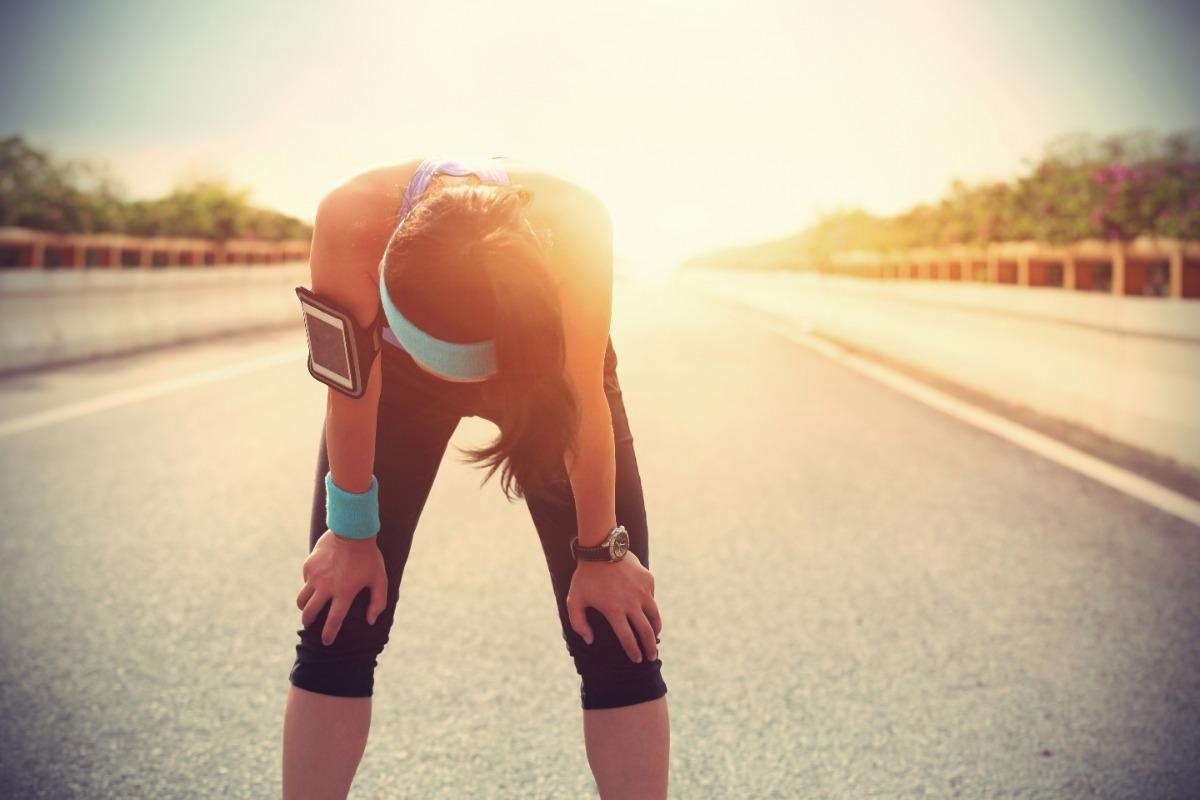
Longer daylight hours make the summer season such an ideal time to run outside! However, running in the heat can be another story. Keep reading to learn about the physiological effects of running in the heat, guidelines to help you successfully plan your summer runs, what to look out for if you are overheating, and how this can affect your running performance.
What happens to your body physiologically that makes it so much harder to run when it’s hot out? In extreme temperatures, the body works to acclimatize and maintain the internal body temperature through a process called thermoregulation via vasoconstriction and vasodilation. In hot environments, blood is circulated away from the major internal organs and muscles towards the skin where blood vessels are dilated. The increased surface area of the skin allows for an evaporative cooling effect through sweat production, preventing the internal temperature from increasing too much. If the volume of sweat loss is not fully replaced by fluid intake, dehydration occurs. Heat stress causes the body to work harder, converting energy to keep you cool. Therefore, your maximal oxygen uptake is also reduced when running in the heat versus running in cooler temperatures. Follow the guidelines below to improve your success with running in the heat.
Time of day
Avoid running between 12:00 – 5:00 pm, as these are typically the hottest hours of the day. Choosing to run early in the morning or later in the evening will allow you to run with less impact from the heat.
Weather considerations
In humid conditions, the body’s evaporative rate decreases due to increased moisture in the air. It’s much more challenging to regulate your temperature when running in a humid environment compared to an arid one.
Running route
Running on a light track or trail will feel cooler than running on asphalt or artificial turf, as these dark surfaces absorb the heat. Pick routes that offer shade and avoid highly reflective areas such as running next to a body of water. Be conscientious of the environmental conditions when selecting the vigor of your run. The hottest afternoon of the year may not be the best time to attempt your longest or fastest run.
Hydration
Hydrating before your run is key! Studies show that we lose about 1 liter of water per hour when exercising in high temperatures.Use the following guidelines to make sure you are well hydrated.
- 4 hours prior to running: Consume 16-20 ounces of water
- 10-15 minutes prior to running: Consume 8-12 ounces of water
- While running: Consume 3-8 ounces of water every 15-20 minutes
Sports drinks containing sodium, potassium, and other electrolytes are also important to consume when running in high temperatures. Maintaining your electrolyte balance is beneficial to avoid cramping and maintain appropriate hydration levels.
Nutrition
It’s important to eat every 45-60 minutes when running in the heat to avoid heat and muscle cramping. Carbohydrate and glucose-rich foods such as a banana, energy bar, or gel can provide the additional energy boost you need to make it through a strenuous run in the heat.
Clothing
Wearing clothing that allows your skin to breathe will maximize the efficiency of the evaporative effect of the skin. Heavy or thick cotton clothing will trap the heat close to your body, making it more challenging to regulate your body temperature. Choose moisture wicking fabrics to keep cool.
Warning Signs of Overheating
When running in the heat, it is important to be mindful of the following warning signs of overheating:
- Cramping
- Nausea
- Lightheadedness
- Dizziness
- Fatigue
- Sweating profusely
Heat fainting can occur secondary to an abrupt stop when running in high temperatures due to a sharp drop in heart rate. Make sure to cool down for a few minutes of easy jogging or walking while rehydrating in order to safely reduce your heart rate before coming to a complete stop. If you begin to feel faint or notice signs of nausea, begin to walk, drink water, or consume a sports drink in order to restore electrolyte balance and rehydrate. It is also important to notify a loved one or someone nearby if you begin to feel faint so that you are able to get assistance should your symptoms become worse. If you begin to notice extreme exhaustion including nausea, vomiting, disorientation, confusion, or impaired balance, you may be experiencing heat stroke. In this case your internal body temperature may be greater than 104 degrees. This is a medical emergency, potentially requiring an ice bath or intravenous fluid to regulate your body temperature and avoid long-term injury.
Not only can it be more challenging to run in the heat, but this can also affect your form and mechanics. Significant fatigue can result in a breakdown in your form and increase your injury risk. To avoid this, adjust your expectations for your run. Complete your run by feel for what you are able to tolerate in the environment, rather than pushing to run for time or distance. If you are having trouble or difficulty with running in the heat, please contact one of our Certified RUNATOMY Specialists, as we can evaluate your running mechanics and help you develop a strategy to keep you running all summer long!
Michelle Rice PT, DPT
Certified RUNATOMY Specialist

Runatomy Blogs are for general information purposes only. The opinions expressed in Runatomy Blogs are solely those of the author, which may or may not be supported by research, and may contain information about products, services, or treatments. Runatomy Blogs are never a substitute for professional advice, examination, or treatment from a licensed physical therapist, physician, or other qualified healthcare provider.
332 Pine St, San Francisco, CA 94104, USA



